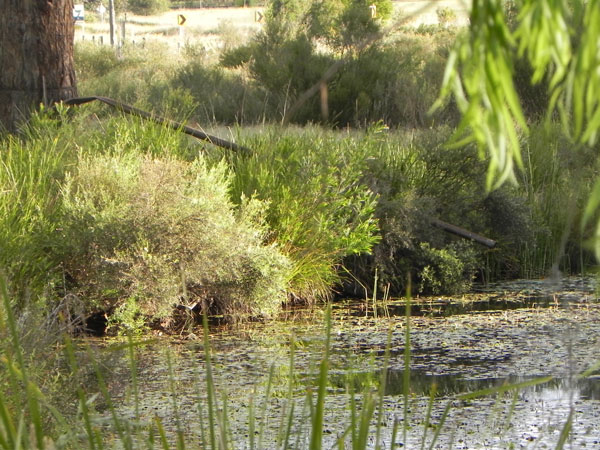Restoring and enhancing biodiversity on the land
Majella Stevens and partner Jonah Herbst have restored their land into a thriving property, despite clear evidence of its prior poor land management when they purchased it in 2013 in Broadswater, Queensland.
The biodiversity, and the resulting effectiveness of their land, was poor. Free range cattle grazing by the previous owner resulted in bare soil, soil capping, overgrazed plants, erosion of creek and dam banks, weed invasion, and mineral depletion – despite two tonnes of fertiliser applied annually.
The couple received funding in 2014 under the Australian Government 25th Anniversary Landcare Grants to restore and optimise land biodiversity using positive livestock impact and applying the principles of the Savory Institute of Holistic Land Management.

Improved creek banks as a result of fencing off cattle access.
Majella and Jonah aimed to improve the four key land health indicators: water cycle; mineral cycle; energy flow; and community dynamics. They hoped through positive stock management and impact they would:
– reduce the amount of bare soil, weeds, and overgrazed plants
– increase desired plants, plant recovery time post-grazing, and stock performance
– speed up biological decay, and reduce soil erosion
They set in place a cattle grazing and land monitoring plan, developed to ensure appropriate time was provided for grazing and animal impact while taking account of land and plant restoration.
They divided all the existing paddocks into smaller cells and allowed the cattle to graze for a few days before moving them into the next cell, before any damage could be done to the plants. This allowed them time to positively impact the land with hoofs and excrement.
To track the results of the planned grazing, they implemented six comprehensive assessments over two years to assess the condition of the soil and plants.
The results show that over the two years, while maintaining the same number of cattle as the previous owner, they achieved:
– decrease in bare ground and in mature capping of the land
– increase in plant litter and spacing between plants
– increase in plant variety and number of mature plants
– increase in plants growing with normal form
– decrease in weeds
– increase in soil moisture retention
The improvements on the monitoring site are evident throughout the rest of the property. Fencing the creek banks and controlling cattle water access halted bank erosion, and promoted plant growth. The introduction of dung beetles also resulted in increased breakdown of manure and cycling minerals into the soil.
Due to improved biodiversity, Majella and Jonah say the land can carry more stock, while ensuring healthy paddocks and cattle, thereby increasing the productivity and profitability of their land.



